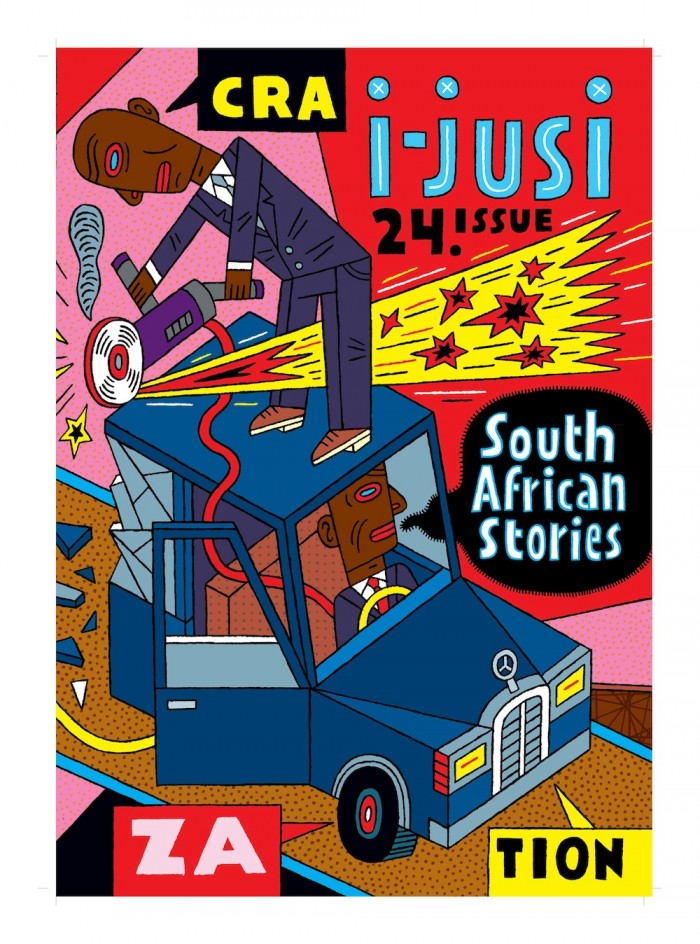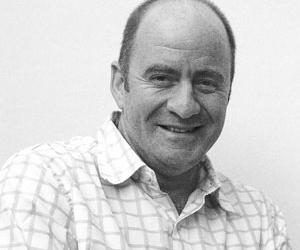
An "Afrocentric design adventure" is how Durban-based designer and publisher Garth Walker describes ijusi (isiZulu for juice), the experimental design magazine he first published in 1995.
In a new retrospective exhibition of the magazine called ijusi - Toward a New Visual Language at the Michaelis Galleries in Cape Town, street photography and graphic comics jostle with conceptual typography. The images on show, from "smileys" (cooked sheep's heads) to a Nelson Mandela portrait, point to Walker's belief that inspiration was to be found everywhere.
Right from the start, ijusi was based on a visual design language rooted in South African experience. "In 1994 - unrelated to the rainbow nation dawn of democracy in South Africa - I went on my own with a studio called Orange Juice. I had this vision that I was going to change the world in corporate graphic design. At the time I had no work, no money and no clients and I was sitting at my Mac doing absolutely nothing. I thought to myself that I had to do something to occupy my time and I decided to design a magazine. I wanted to design a magazine that no one else was doing and so I looked to my own backyard, which was Africa."
Walker released the first issue of ijusi from his studio. The printing was sponsored by a printer looking to breaking into the agency world and text written by Siobhan Gunning.
With the success of the first two issues under his belt, Walker invited both South African and international designers, writers and artists to contribute. Over the years, subsequent themed issues made invaluable contributions to the ongoing discourse surrounding representation and identity in South Africa, specifically within the contexts of graphic design, illustration, typography, writing and photography. The list of contributors reads like a roster of contemporary creative talent: Roger Ballen, Jonathan Barnbrook, Lauren Beukes, Willem Boshoff, Katherine Bull, Brandt and Conrad Botes, Jean Brundrit, David Goldblatt, Pieter Hugo, Stephen Inggs, Mark and Anton Kannemeyer, William Kentridge, Michael MacGarry, Sne Mtetwa, Stefan Sagmeister, Mikhael Subotzky, Guy Tillim and Sean O’Toole.
Despite (or maybe because of) the low print run, ijusi, has developed cult following worldwide. Now in its 29th edition, the magazine is in the collections of the Museum of Modern Art in New York, Biblioteque Nationale de France, the Victoria and Albert Museum, the Smithsonian, and numerous university and academic collections across the globe.
Determined to keep the magazine non-commercial, Walker has launched three portfolios of prints with Rooke Gallery to ensure ijusi’s livelihood. A democratic arbiter of great imagery, he invited a selection of South Africa's leading artists and photographers, world-renowned graphic designers as well as local unknown designers to submit work. The images on exhibition, which include the latest portfolio of prints, purposefully blur the distinctions between fine art and design.
Ever the independent, Walker went solo again in 2008 with his new studio, Mister Walker. But he continues to publish ijusi, exploring a new African visual language and asking the question: “What makes me South African, and what does that ‘look’ like?”
ijusi - Toward a new Visual Language runs until 23 July at Michaelis Galleries in Cape Town.






